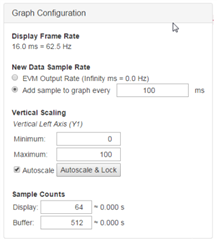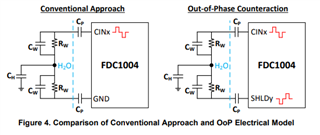Other Parts Discussed in Thread: FDC2214, FDC1004
My goal is to use FDC2214 EVM for capacitance measurement by itself sensor. I am not changing any part of the EVM. I want to make sure whether the EVM could work usually.
From my experience with FDC1004 EVM. After we powered up the board, we have 2 methods to configure this EVM. We could do it through the ‘register’ or ‘configuration’ pages. We may select one method that is enough. Is my understanding right about this point?
When I use FDC2214 EVM, I use the same ways as I mentioned. I directly went to the configuration page to see whether it could work normally. But I found two errors as shown in the first picture. To solve these 2 errors. I tried RESET_DEV =1 (in 15th ) in the register page and then did the configuration in the configuration page. I followed ‘EVM User’s Guide’. After I finished these setting. One of the error disappears, while another still exist (please see the second picture). And also I found that I could not ‘detect Idrive’ (please see the third picture). I am not sure which step I misunderstood. Could you please help me with that? Thank you very much.





